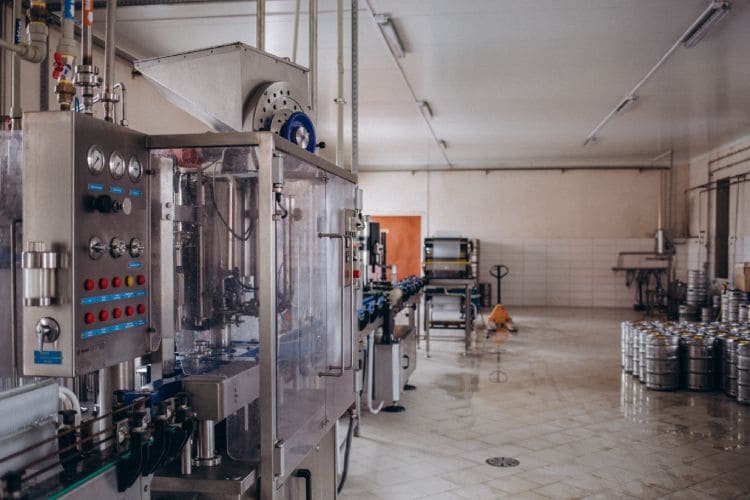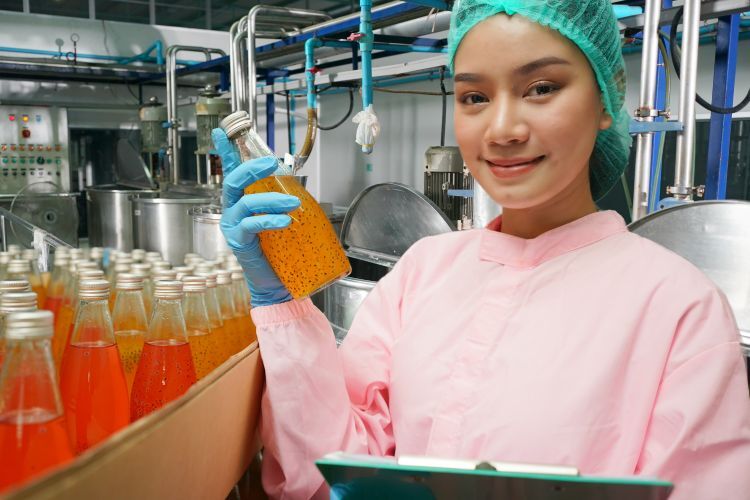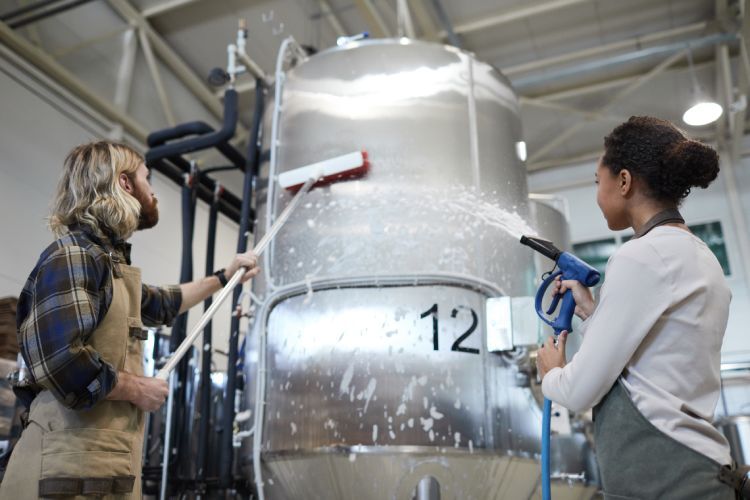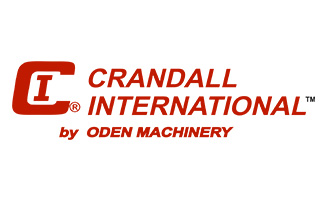
In industries like food and beverage, pharmaceuticals, and chemicals, keeping production lines clean can be difficult, but it’s mandatory for safety, compliance, and efficiency. Liquid filling machines, in particular, come into direct contact with products that can easily harbor bacteria or residues if not cleaned properly.
Traditionally, cleaning these systems required operators to dismantle equipment piece by piece, a time-consuming and sometimes risky process. Clean-in-place (CIP) systems have changed that. By allowing the internal components of filling machines to be cleaned automatically—without disassembly—CIP offers a faster, safer, and more consistent way to maintain sanitation.
What Is Clean in Place?
Clean in place refers to an automated cleaning process that removes residues, microbes, and other contaminants from the interior surfaces of equipment like tanks, valves, pumps, and filling nozzles without having to take them apart. It’s a closed-loop system that circulates cleaning and rinsing solutions through the machinery.
A CIP system functions as a fully integrated cleaning circuit. It typically includes solution tanks, pumps, heat exchangers, valves, and a programmable logic controller (PLC) or human-machine interface (HMI) that manages temperature, flow, and concentration. This system continuously circulates cleaning and rinsing fluids through the wetted areas of the filler. Unlike manual cleaning, where results depend heavily on operator skill, CIP relies on precise, repeatable parameters.
A standard CIP process typically involves several stages:
- Pre-rinse: Flushes away product residues with water
- Detergent wash: Circulates a heated cleaning solution (often alkaline) to dissolve fats, proteins, and sugars
- Intermediate rinse: Removes detergent and residual soils
- Acid rinse (optional): Helps dissolve mineral deposits or scale
- Final rinse: Ensures all cleaning agents are removed
- Sanitization or sterilization: Applies a sanitizer or steam to eliminate remaining microorganisms
It’s also important to distinguish CIP from similar systems. Clean-out-of-place (COP) requires partial disassembly, where components are removed and washed in a separate cleaning station. Steam-in-place (SIP), on the other hand, follows a similar concept to CIP but uses steam to sterilize equipment after cleaning. SIP is most commonly used in aseptic or pharmaceutical applications. While CIP focuses on cleaning, SIP ensures sterilization. Many advanced liquid filling systems integrate both CIP and SIP capabilities for comprehensive hygiene assurance.
The Importance of CIP Systems for Liquid Filling Machines
Liquid filling machines are critical in many production lines, but they also pose some of the greatest contamination risks because they handle a wide variety of products and formulations. Without an effective cleaning system, residues can lead to cross-contamination, spoilage, and even regulatory violations.
Maintaining Compliance & Product Safety
CIP systems play a vital role in maintaining compliance with sanitation regulations such as the U.S. Food and Drug Administration’s Current Good Manufacturing Practices (CGMP), the Food Safety Modernization Act (FSMA), and 3-A Sanitary Standards. These regulations require manufacturers to implement verifiable cleaning procedures. A CIP system provides automated data recording and validation for each cleaning cycle, confirming that every run meets regulatory expectations. This traceability not only supports audits but also demonstrates a commitment to consumer safety.
Reducing Manual Labor & Downtime
Manual disassembly and cleaning of liquid fillers can consume hours of labor and cause extended downtime. CIP systems streamline this process by automating cleaning cycles, reducing changeover times between batches, and freeing operators for higher-value tasks. Less manual intervention also lowers the risk of equipment damage, improper reassembly, and potential contamination from human contact.
Achieving Consistent & Repeatable Cleaning
Every CIP cycle follows precise parameters—time, temperature, flow rate, and concentration—to maintain consistent and measurable results. Unlike manual cleaning, which can vary between shifts or operators, CIP delivers the same standard of cleanliness every time. This consistency translates to better product quality, reduced waste, and fewer rejected batches.
Improving Worker Safety
By eliminating the need for manual scrubbing and exposure to harsh cleaning agents, CIP significantly boosts worker safety. Operators can run cleaning cycles through a control panel, minimizing contact with chemicals, heat, and moving machinery, which not only protects personnel but also reduces the likelihood of accidents and chemical burns.
Increasing Productivity & Equipment Utilization
For high-volume operations, time is money. CIP systems minimize production interruptions by completing cleaning cycles quickly and efficiently. With automated verification and pre-programmed recipes, manufacturers can switch between products more frequently and confidently. The result is higher throughput and better utilization of assets.
How CIP Works in Liquid Filling Machines
The core idea behind CIP is circulation. Instead of manually cleaning each component, a CIP system pumps cleaning solutions through the same flow paths that the product takes during filling so that all wetted parts—such as manifolds, hoses, pumps, and nozzles—are exposed to the cleaning agents.
A typical CIP setup includes several key components:
- Cleaning solution tanks for water, detergents, and acids
- Heat exchangers to control temperature
- Pumps and valves to direct and pressurize the cleaning flow
- Sensors to monitor flow, temperature, and chemical concentration
- A control system (PLC/HMI) to automate and record every stage
Before the CIP process begins, the system isolates the product path and ensures all valves are properly sealed to prevent contamination. Then, the automated sequence initiates.
Here’s a step-by-step example of how CIP works for a filling line:
- The system isolates the product path and starts a pre-rinse with warm water.
- A caustic cleaning solution is circulated at high flow to create turbulent action to make sure all internal surfaces are scrubbed by the flow itself.
- Conductivity sensors verify the concentration of cleaning chemicals.
- A rinse cycle removes the detergent.
- If needed, an acid rinse dissolves mineral buildup.
- A final rinse and sanitization cycle prepare the line for production.
After the process concludes, sensors confirm that all cleaning agents have been flushed from the system. Many advanced CIP setups will log cycle data for quality assurance to create an electronic record that verifies compliance and performance. Additionally, the closed-loop process saves water and chemicals and confirms that every cleaning run meets strict hygiene standards.

Industries That Use Fillers with CIP Systems
CIP technology is foundational anywhere a filling line must balance speed with uncompromising hygiene. The common thread across industries is the need to change products quickly, document sanitation, and protect brand trust—all without dismantling complex equipment. A well‑designed CIP program lets teams move from one batch to the next with confidence, whether they are managing allergens, viscosity extremes, or sterile boundaries.
Here are some of the sectors where CIP‑ready fillers deliver the greatest impact.
Food & Beverage
Food and beverage plants face frequent flavor and formulation changeovers under strict Hazard Analysis Critical Control Point (HACCP) and FSMA programs. Residual sugars, fats, proteins, and particulates can form biofilms or carry flavors into the next run if not removed.
CIP provides turbulent, recipe‑driven cleaning of product paths, filler bowls, and nozzles, which helps with preserving taste profiles, preventing allergen cross‑contact (e.g., dairy, nuts, gluten), and maintaining shelf stability. Automated data capture supports customer and regulator audits, while short, validated cycles keep high‑throughput lines running.
Pharmaceuticals & Biotech
In drug manufacturing, cleanliness directly relates to patient safety and regulatory license to operate. Oral solutions, syrups, and aseptic products require cleaning that is both effective and provable. CIP enables controlled, measurable removal of residues, followed by SIP (steam‑in‑place) where sterilization is mandated. The result is repeatable sanitation that supports sterile boundaries and minimizes downtime between campaigns.
Personal Care & Nutraceuticals
Lotions, gels, serums, and tinctures often contain thickeners, oils, and active ingredients that adhere to surfaces and make traditional cleaning difficult. Manual cleaning can be inconsistent and slow, especially in narrow nozzles and manifolds. CIP floods these hard‑to‑reach areas with properly heated and concentrated solutions, breaking down sticky residues and preventing cross‑contamination of actives, colors, and fragrances.
Household, Specialty, & Industrial Chemicals
Formulations such as cleaners, solvents, and specialty chemicals demand rigorous separation between batches to preserve performance and safety. CIP helps avoid adverse reactions from residual chemistries and ensures precise switchover between formulations.
Material compatibility (e.g., 316L stainless steel, elastomer selection) and, when applicable, hazardous area considerations are built into CIP‑ready fillers. Automated controls reduce operator exposure to aggressive agents and provide verifiable proof that lines are free from previous products before packing resumes.
6 Benefits of CIP for Liquid Filling Equipment
Implementing CIP on liquid filling equipment goes beyond keeping things clean. It reshapes how production teams schedule work, verify quality, and manage risk. The payoffs span throughput, compliance, worker safety, sustainability, and customer trust.
1. Faster Changeovers
CIP compresses non-productive time between batches. Operators launch a validated cleaning recipe from the HMI, and the system autonomously sequences pre-rinse, wash, rinse, and sanitize steps. Because flow, temperature, and concentration are enforced, lines return to a production-ready state quickly and predictably. As a result, facilities running multiple stock-keeping units (SKUs) per shift gain extra hours of filling capacity each week, which translates into higher order responsiveness and better asset utilization.
2. Improved Sanitation
Manual methods can miss blind spots like long manifolds, nozzle internals, and valve seats. CIP is engineered to drive turbulent flow through every wetted surface, applying the right chemistry at the right temperature for the right duration. This repeatable hydrodynamic “scrubbing” breaks down soils and disrupts biofilms far more reliably than hand tools. The outcome is fewer micro failures, reduced flavor or color carryover, and a tighter process capability on hygiene key performance indicators (KPIs).
3. Regulatory Compliance & Audit Readiness
Modern CIP systems record parameters such as time at temperature, detergent conductivity, flow rate, and alarms. These electronic records demonstrate control under programs like CGMP, FSMA preventive controls, 3 A Sanitary Standards, and European Hygienic Engineering and Design Group (EHEDG) guidance. During audits, quality assurance (QA) can quickly retrieve proof that every cycle met acceptance criteria and that deviations were addressed before release. This documented control lowers compliance risk and builds confidence with customers and regulators alike.
4. Worker Safety & Ergonomics
Disassembly, scrubbing, and chemical handling expose staff to burn, splash, and pinch hazards. With CIP, operators interact primarily through guarded panels and automated valves, reducing direct contact with hot liquids and caustics. Fewer manual lifts and fewer confined space entries also reduce ergonomic strain and injury risk.
5. Resource Efficiency & Sustainability
CIP recipes are tuned to minimize waste while maintaining efficacy. Closed-loop designs can recover heat, reuse compatible rinse water as a later pre-rinse, and meter chemicals precisely via conductivity control. Over time, this process reduces water consumption, effluent load, and chemical spend—key metrics in corporate sustainability reporting. When using a CIP system, plants often see utility savings that compound alongside the productivity gains from quicker turnarounds.
6. Traceability, Trending, & Continuous Improvement
Each CIP run generates structured data that can be trended over weeks and months. QA and maintenance teams use this data to spot nozzle fouling patterns, valve performance drift, or suboptimal temperatures. Early detection prevents quality escapes and unplanned downtime. The same datasets feed continuous improvement projects, like optimizing recipes, shortening cycles, or adjusting setpoints to match soil loads while preserving compliance margins.

Best Practices for Keeping Liquid Filling Machines Clean & Compliant
To get the most from your CIP system, it’s essential to pair proper design with disciplined maintenance and monitoring. Implementing the following practices helps maintain long-term performance and regulatory confidence.
Design for Cleanability
CIP effectiveness begins with equipment design. When the equipment itself is designed for cleanability, CIP achieves faster, more complete results.
Choose filling systems built with hygienic principles in mind, such as using 316L stainless steel, smooth interior surfaces, and crevice-free welds. All piping should be properly sloped to promote drainage and prevent standing liquid, and fittings should eliminate dead legs where product can accumulate. Every connection, gasket, and seal must withstand repeated exposure to caustic and acidic cleaning agents without degrading.
Train Personnel & Follow Standard Operating Procedures (SOPs)
Effective CIP operation depends on knowledgeable personnel. Proper training helps operators recognize abnormalities, perform routine checks, and safely manage the cleaning system. Every operator should be trained on system procedures, safety protocols, and chemical handling practices. SOPs should be clearly documented and reviewed regularly.
Maintain Equipment Regularly
Preventive maintenance extends the lifespan and reliability of both the filler and its CIP system. This process includes inspecting seals, gaskets, and valves for wear; calibrating sensors; and checking flow and temperature readings. Scheduled maintenance makes sure the system continues to clean effectively and that critical data remains accurate for compliance reporting.
Validate & Monitor Each Cycle
Validation ensures that your CIP system consistently performs to specification. During setup, manufacturers should establish baseline cleaning parameters using the TACT framework: time, action, chemistry, and temperature. Once validated, sensors monitor these parameters continuously to verify each cycle meets its targets. Any deviation triggers an alarm or halt, so your team can take corrective action before production resumes.
Comprehensive logs provide documentation for internal quality teams and external auditors.
Test & Verify Cleanliness
Even automated systems require regular verification. Conducting rinse-water sampling, adenosine triphosphate (ATP) swab tests, or microbial testing confirms that cleaning cycles achieve the desired sanitation level. These tests help detect early signs of biofilm formation or chemical carryover, allowing maintenance teams to intervene before problems escalate.
Clean-in-Place Filling Machines: FAQs
What Is CIP in a Filling Machine?
Clean in place (CIP) is an automated method for cleaning the internal, product-wetted surfaces of a filler—such as manifolds, pumps, valves, and nozzles—without taking the equipment apart. A CIP system circulates heated water and detergents through the same paths product follows, then rinses and sanitizes before production resumes.
How Does CIP Cleaning Work?
CIP systems work by driving turbulent flow of properly heated and concentrated solutions through the equipment. A typical recipe includes a pre-rinse, an alkaline wash to remove organic soils, an optional acid wash for mineral scale, one or more rinses, and a sanitation or sterilization step. Sensors verify key parameters, and the control system records each stage for traceability.
What Is the Difference Between CIP & SIP?
CIP (clean in place) focuses on cleaning, specifically removing soils and residues, while SIP (steam in place) focuses on sterilization. In many regulated or aseptic applications, CIP is followed by SIP to destroy remaining microorganisms. Some lines use chemical sanitizers instead of steam when full sterilization is not required.
What Chemicals Are Used in CIP?
Most CIP programs rely on alkaline detergents (often caustic soda) to break down fats, proteins, and sugars. Acid cleaners (such as nitric or phosphoric blends) remove mineral deposits. Final sanitation may use peracetic acid or other approved sanitizers. Chemistry selection should match product soils, water quality, metallurgy, and elastomer compatibility.
How Often Should Clean-in-Place Equipment Be Sanitized?
Frequency depends on product risk, run length, and regulatory requirements. Many plants sanitize at every product changeover and at defined intervals during long campaigns. Your HACCP or CGMP plan should specify when to sanitize based on hazard analysis, allergen control, and micro limits.
How Long Does a Typical CIP Cycle Take?
Cycle time varies by equipment size, soil load, and validation targets. As a ballpark, complete cycles on fillers can range from 30 to 120 minutes. Optimized recipes and heat recovery can shorten cycles without sacrificing efficacy, but any reduction should be validated.
Can CIP Handle Allergen Changeovers?
Yes, provided the recipe is validated for the specific allergen and soil load. Many facilities add targeted pre-flushes, extend alkaline wash times, and verify with allergen test kits or rinse water analysis before releasing the line to production.
How Do I Validate My CIP Process?
Validation confirms the cycle consistently meets cleanliness targets under worst-case conditions. It typically includes riboflavin coverage tests or tracer studies, swab or rinse testing (ATP, micro, allergen, etc.), and documented acceptance criteria. Once validated, any recipe or equipment changes should trigger re-validation.
What Documentation Do Auditors Expect from CIP?
Auditors look for defined SOPs, validated recipes with acceptance criteria, and electronic or paper records for each run showing time, temperature, flow, and chemical concentration. They also expect evidence of corrective actions when parameters fall outside limits and proof of periodic verification testing.
When Is COP Still Necessary
COP (clean out of place) is used for parts that cannot be reliably cleaned in situ or require detailed inspection, such as small removable components, screens, or heavily soiled accessories. Many programs combine CIP for the main product path with COP for select parts.
Which KPIs Should We Track for CIP Performance?
Key performance indicators include cycle success rate, time at temperature, detergent conductivity, flow rate, water and chemical use per cycle, and verification pass rates (ATP, micro, allergen). Trending these metrics supports continuous improvement and early maintenance intervention.
What Are Common Mistakes with CIP?
Typical CIP pitfalls include insufficient turbulent flow, poor drainability or dead legs, incorrect chemical concentration, and uncalibrated sensors. Another frequent issue is skipping verification testing after recipe changes. Addressing these gaps strengthens both sanitation and uptime.
Can CIP Be Retrofitted to Existing Filling Lines?
Often, yes. Many legacy fillers can be upgraded with CIP-ready manifolds, valves, nozzle cups, and a skid with pumps, tanks, heat exchangers, and controls. A site assessment will confirm piping slopes, drainability, and materials compatibility before design.
Partner with Oden Machinery for CIP-Ready Liquid Filling Equipment
Clean-in-place systems have transformed how liquid filling machines are cleaned. They offer unmatched efficiency, consistency, and compliance and allow manufacturers to uphold hygiene standards, speed up production, and reduce operating risks—all without dismantling their equipment.
If your current filling line still relies on manual cleaning or partial automation, it’s time to explore a modern solution. At Oden Machinery, we have a wide variety of liquid filling machines with fully integrated CIP capabilities that are designed to help manufacturers protect product integrity, streamline operations, and stay audit-ready.
Contact us today to schedule a consultation and learn how a CIP-ready system can improve your production line’s performance.

